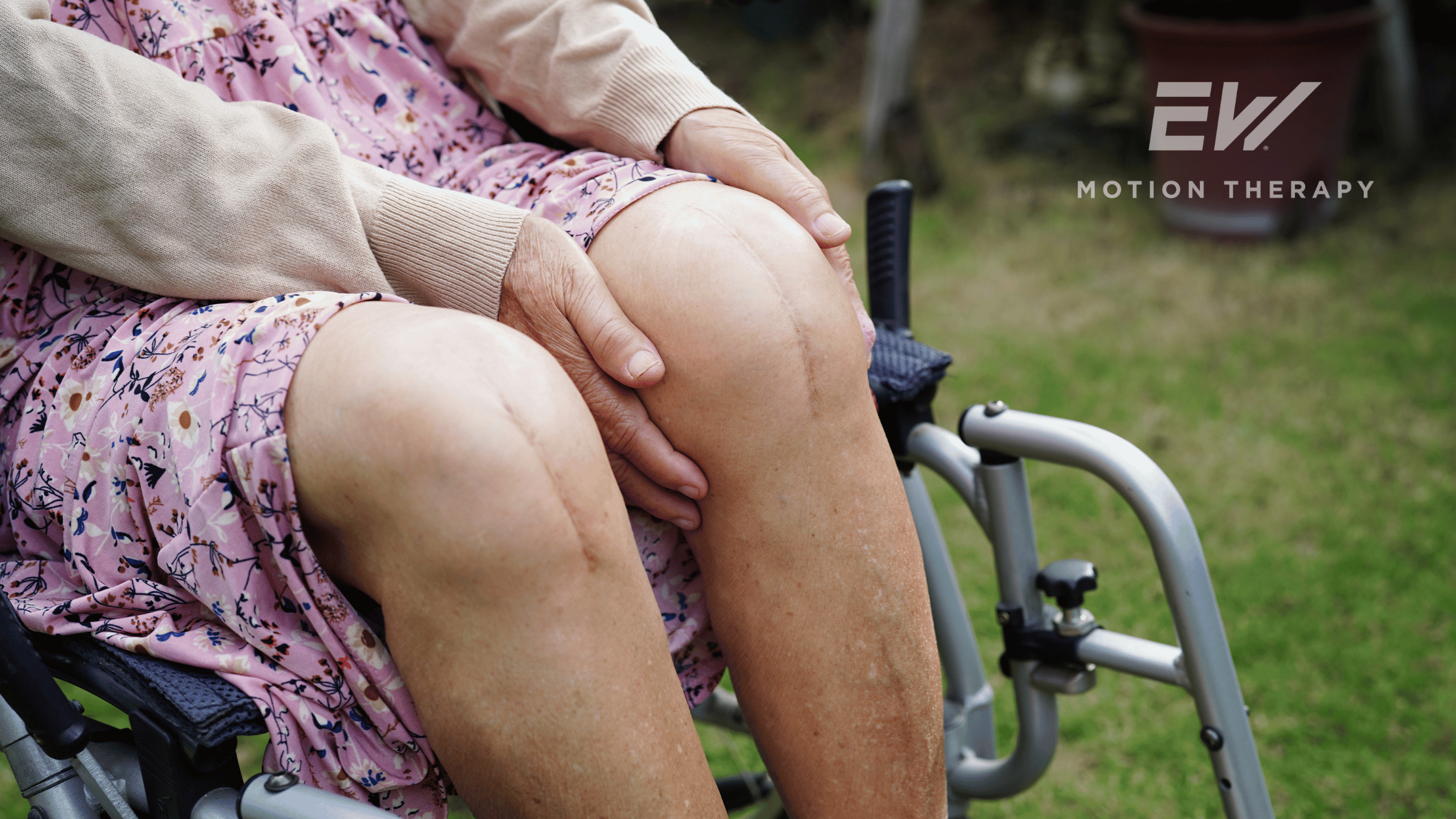Balance Decline After Knee Replacement: Safety Considerations and the Role of Physical Therapy

Licensed Physical Therapist, PT, DPT // EW Pilates Instructor // EW Yoga Instructor // LSVT – Big Certification // Credentialed APTA Clinical Instructor // EW Motion Therapy Homewood
Knee replacement surgery, also known as knee arthroplasty, is a standard procedure for individuals suffering from severe knee pain and mobility issues, often due to arthritis or injury. While the surgery aims to restore function and reduce pain, it's not uncommon for patients to experience a decline in balance during the recovery process. We love walking alongside our patients at EW Motion Therapy through every stage of a knee replacement, from preparing for the procedure to every aspect of recovery. Even if you decide that our services don’t fit your needs, it’s still important to understand why this balance decline occurs, the safety considerations during recovery, and how physical therapy can help. This information is crucial for a smooth rehabilitation journey.
Why balance decline occurs after knee replacement
Balance issues post-knee replacement are a frequent concern among patients, and they can be attributed to various factors that impact the body's ability to maintain stability.
Muscle weakness and atrophy
One of the primary reasons for balance decline after knee replacement is muscle weakness. Prior to surgery, chronic pain and limited mobility often lead to muscle atrophy, particularly in the quadriceps, hamstrings, and calf muscles. Post-surgery, the operated leg remains weak due to the trauma of the operation and the extended period of disuse during recovery. Weak muscles are less capable of supporting the knee joint and maintaining balance, which can make simple activities like walking or climbing stairs feel unstable.
Altered proprioception
Proprioception refers to the body's ability to sense its position and movements in space. During knee replacement surgery, nerves that provide proprioceptive feedback may be affected, leading to a diminished sense of knee joint positioning. This loss of proprioception can disrupt the body’s natural ability to balance, as patients may struggle to sense how their knee moves and responds to weight-bearing activities.
Changes in gait mechanics
Knee replacement surgery alters the structure and mechanics of the knee joint. Post-surgery, patients often need to relearn how to walk with the new joint, which can temporarily affect balance. The altered gait mechanics can cause uneven weight distribution, reliance on the non-operated leg, and hesitancy to fully bear weight on the operated knee, all of which contribute to a sense of imbalance.
Pain and swelling
Post-operative pain and swelling are common and can further impede balance. Pain often leads to guarded movements, where patients unconsciously favor the non-operated leg to avoid discomfort. Swelling can restrict the knee's range of motion, making it difficult to perform movements that require bending or straightening the knee, which are essential for maintaining balance.
Safety considerations during recovery
As balance issues are a common concern after knee replacement surgery, it's important to implement safety measures to reduce the risk of falls and promote a safe recovery environment.
Home modifications
Modifications at home are essential to ensure a safe recovery space. Consider removing tripping hazards such as loose rugs, electrical cords, and clutter. Installing grab bars in the bathroom, using non-slip mats, and placing frequently used items within easy reach can also reduce the risk of falls.
Assistive devices
Using assistive devices such as walkers, crutches, or canes can provide additional stability during the initial stages of recovery. These devices help offload weight from the operated knee, making it easier to maintain balance while walking. It's important to use the correct device and to receive proper instruction on its use from a healthcare provider or physical therapist.
Proper footwear
Wearing supportive, non-slip footwear is another key safety consideration. Shoes with good arch support and a stable sole can improve grip on various surfaces, thereby enhancing balance. Avoid wearing high heels, slippers, or any footwear that lacks stability during the recovery period.
Pacing and rest
Balance and strength take time to rebuild, so it's important to pace yourself and not rush through activities. Gradually increase your activity level as your strength and confidence improve. Allow for plenty of rest and listen to your body’s signals to avoid overexertion, which can lead to further imbalance and potential injury.
How physical therapy can help improve balance
Physical therapy is critical not only in addressing balance decline after knee replacement surgery but also in other aspects of recovery. A well-structured physical therapy program can help patients regain strength, improve proprioception, and restore functional mobility, all of which are essential for balanced movement.
Strengthening exercises
Physical therapists design individualized exercise programs that target the muscles around the knee, as well as other key muscle groups involved in maintaining balance, such as the core and hips. Strengthening exercises, including leg presses, heel raises, and resistance band work, help rebuild muscle mass and improve joint stability, which directly enhances balance.
Proprioceptive training
To address the loss of proprioception, physical therapists incorporate exercises that challenge and improve the body’s sense of joint positioning. These exercises may include balance boards, foam pads, and other unstable surfaces that encourage the body to engage stabilizing muscles and refine balance control. Activities like standing on one leg or walking on uneven terrain can also retrain proprioceptive feedback mechanisms.
Gait training
Proper gait training is essential for restoring normal walking patterns post-surgery. Physical therapists work with patients to correct gait abnormalities by focusing on foot placement, stride length, and weight distribution. If needed, a patient can begin gait training with a walker until they can walk unassisted, then their physical therapist will tailor a progression based on the patient’s confidence level. This training helps patients regain confidence in their ability to walk without compensatory movements that could lead to imbalance.
Functional mobility exercises
Functional mobility exercises mimic everyday activities such as climbing stairs, getting in and out of a chair, or reaching for objects. These exercises are designed to help patients regain the ability to perform daily tasks safely and independently. By practicing these movements under the guidance of a physical therapist, patients can improve their overall balance and reduce the risk of falls.
Education and support
Physical therapists provide valuable education on body mechanics, posture, and safe movement strategies to minimize the risk of falls. They also offer support and encouragement, helping patients set realistic goals and track their progress throughout recovery. This guidance is crucial for building the confidence needed to overcome balance challenges.
Balance decline is a common but manageable issue following knee replacement surgery. Understanding the underlying causes of balance problems, implementing safety measures during recovery, and engaging in a comprehensive physical therapy program can significantly improve outcomes. With time, patience, and the proper support, most patients can regain their balance and return to their daily activities with confidence and independence. By working closely with healthcare professionals, including physical therapists, patients can ensure a safer and more effective recovery journey after knee replacement surgery. From preparing your body for surgery to recovery after, our team at EW Motion Therapy will walk with you every step of the way so you can return to the activities you love. To learn more about what your physical therapy might cost, click the button below to download our free pricing guide.


